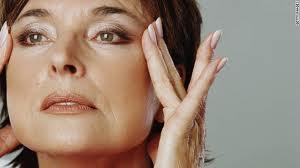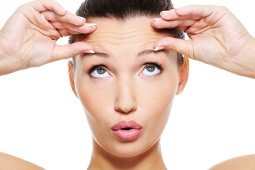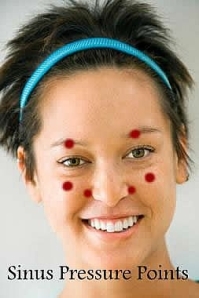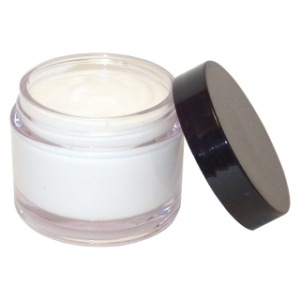
The older I get the more I need make-up. Though that doesn’t mean that I won’t leave the house without a full face of make-up it does mean that I have realized that a few strategically placed make-up products do make a big difference in my appearance. Some days I have the time and the inclination to put on eyeshadow, eyeliner, and mascara along with my other essential make-up steps, and other days I just make sure that I fill in my brows with brow powder, use undereye concealer, face powder, face concealer, and a little lip tint. It’s the little things that can make a big impact. You don’t have to use a lot of make-up to look polished and put together even if all you are doing is going to the grocery store. No one has flawless skin; everyone has a beauty feature or two that make-up can help look better. For instance, my brows are sparse so filling them in with brow powder makes a big impact on my face. I never seem to get enough sleep so using undereye concealer helps me look more rested. And no matter how much skincare knowledge I amass my skin still has post-inflammatory hyperpigmentation, blackheads, breakouts, and blotchiness so using a foundation (either powder or cream) and a concealer makes me feel like I am putting my best face forward to the world (even if that world is just the grocery store clerks and patrons). Make-up gives you confidence. Make-up is fun.
But some people still worry that wearing make-up on a daily basis, particularly foundation, is actually bad for their skin instead of good for it. There is a persistent skincare myth that our skin needs to “breathe” and by wearing make-up we are preventing that important function from taking place. I’ve already debunked this myth in a previous post: Does Your Skin Need to Detoxify/Breathe?, but I’ll revisit the topic here briefly. I quoted Discovery Health in that previous post and let me once again share what they had to say about this topic:
Every day, a barrage of advertisements for various cosmetics, oils and ointments assault our eyes and ears, all claiming to “let your skin breathe.” But does your skin actually “breathe”? Does it really take in enough oxygen to keep you alive?
Not unless you’re an amphibian, an earthworm or a Julia Creek dunnart. Although it can’t perform the functions of respiration, your skin can absorb fat-soluble substances, including vitamins A,D, E and K, along with steroid hormones such as estrogen. Many menopausal women, for example, have estrogen patches to thank for their relief from hot flashes, while nicotine patches have relieved cravings for many smokers trying to kick the habit. So, while the skin can’t breathe, it can take substances from the outside and bring them in, including a little oxygen.
The skin and its appendages, such as hair and nails, make up the integumentary system. The word integumentary comes from Latin, meaning “to cover,” and that is the skin’s main purpose — to keep the world out and our internal organs protected. By its very nature, skin does not help us breathe. …
What does help us breathe is the respiratory system. The respiratory system is responsible for getting oxygen to our blood and removing carbon dioxide from the body. When we inhale, we take in oxygen through our mouth and nose and into the lungs. In the lungs, the oxygen flows into the blood through the arteries, while veins deliver carbon dioxide back to the lungs. From the lungs, we exhale the carbon dioxide back out into the atmosphere, and the process begins again.
So why might we be led to believe that oxygen can pass through the skin?
Misconceptions and Myths
Many people are convinced that we pull in oxygen through our pores, and cosmetic companies capitalize on this belief — at least through unspoken messages — by claiming that their products “let the skin breathe.” If pressed, the manufacturers would probably say what they really mean is that the cosmetics and creams are non-comedogenic, meaning they don’t block pores. This prevents acne from building up, not suffocation. Some companies take it a step further and claim that their products contain oxygen that your skin will absorb. Since your skin doesn’t have the capacity to absorb and use oxygen, dermatologists warn that this is totally bogus. The closest thing to pure oxygen in a skin care product is benzoyl peroxide, which kills acne-causing bacteria by oxidizing fatty acids.
Many people believe the urban legend that Buddy Ebsen, cast as the Tin Man in “The Wizard of Oz,” nearly died because the aluminum in the makeup that gave him his silvery sheen clogged his pores. In fact, Ebsen did wind up in the hospital and was replaced, but it was attributed to an allergic reaction or an infection in his lungs caused by the aluminum dust. Needless to say, the makeup was modified for new scarecrow Jack Haley, and he danced through the role without incident.
Another famous movie incident involves 1964′s “Goldfinger.” After discovering his secretary has betrayed him, the villain Goldfinger paints her entirely — hair and all — with gold paint. Looking at her lifeless body, James Bond explains that the paint closed the pores she needed for respiration. In 1964, it seems, this was a medically accepted belief. The filmmakers took no chances and were careful to leave a patch of actress’s Shirley Eaton’s skin unpainted when shooting the scene.
Having gotten that issue out of the way, let’s focus again on the actual topic of this post: can using make-up actually help or even improve the appearance of your skin? Esthetician Renee Rouleau certainly thinks so:
The fact is, wearing makeup (appropriate for your skin type) offers a barrier of protection against harmful UV rays. UV rays from the sun is the #1 reason for skin aging. It’s not genetics, smoking, and believe it or not, even age. The sun is the skin’s WORST enemy. Most types of makeup contain sunscreen and even if they don’t indicate an SPF number, most have UV-protecting ingredients like Titanium Dioxide. Based on this benefit from wearing makeup, I never leave my skin bare and never suggest my clients to do so either. So do your skin a favor and start wearing makeup NOW, to prevent wrinkles in your future.
(From Is Wearing Foundation Makeup Daily Bad for Your Skin?)
And what of make-up that promises anti-aging or the like? The New York Times explored this topic in the article Promises from the Powder Room:
Light-reflecting. Acne-fighting. Energizing. Face powder, long associated with grandmothers and a dusty, chalky look, has been remade. Some companies say the product is not only a cosmetic, but also a face treatment, and are loading it with SPF, antioxidants and vitamins. …
Marketing hype aside, some doctors agree that powders pack more of a punch these days. “People have seen the utility of BB creams; they like getting many effects from the same products,” said Dr. Neal Schultz, a cosmetic dermatologist in private practice in Manhattan and founder of DermTV.com. “These are great for people who want fewer products to apply, and an oil absorber.”
But others say that the “poof — all gone” effects that these powders promise are basically stardust and mirrors. “I’m increasingly skeptical with products that over-promise,” said Ron Robinson, a Manhattan chemist specializing in the technology of cosmetic ingredients and the founder of BeautyStat.com, which reviews new products. “Where’s the clinical testing that validates their claims?”
“The blurring component is true,” he said, but “claims that it will reshape, sculpt and improve wrinkles are benefits few skin-care creams and serums designed to plump and firm the skin can offer.” …
“There’s a real science to these products and to the ingredients in them, which help and maintain the skin,” said Dr. Joshua Zeichner, director of cosmetic and clinical research in the dermatology department at Mount Sinai Hospital in New York. But he pointed out that a powder’s visual effects vanish once the product is removed; its particles are too big to penetrate skin.
As for long-term benefits: “That has yet to be determined,” Dr. Zeichner said. “If you use products like this on a regular basis and take care of your skin, it’s possible these powders can help slow down the aging process.” …
Dr. Francesca Fusco, a Manhattan dermatologist, says she is firmly pro-powder, at least when it comes to the new modern products. “A powder won’t replace your moisturizer, serum or retinol, but it’s a great added extra,” she said. “For not a lot of money you can get a flawless look. And that’s better than using nothing.”
So when it comes to your make-up should you trust it to transform your skin long after you remove it? Personally I am still very skeptical that a few extra ingredients mixed into your cream or powder foundation will be your anti-aging or anti-acne answer, but the better you look the better you feel and that is truly transformative.
My Related Posts:
- Achieving the ‘N0 Make-up’ Make-up Look
- Make-up for Acne Prone Skin
- Make-up for the Make-up Phobic
- Anti-Aging Ingredients in Make-up – Are They Really Doing Something?
- Mineral Make-up: The Best Make-up Out There?
- Make-up Mistakes that Age You
- Reasons to Remove Your Make-up and Wash Your Face
- Expired Make-up and Skincare Products – When to Replace Your Products
- Book Reviews: Make-up Tutorial Books
Image from makeupandbeautyblog.com












Recent Comments